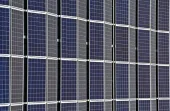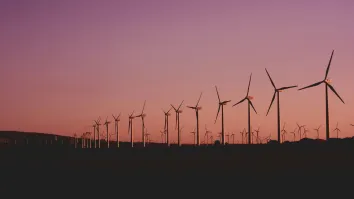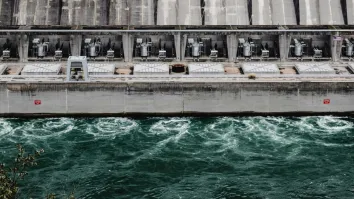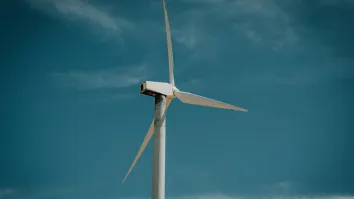
SECTOR REPORT: Asian countries are scrambling to tame the wind to add to their fuel mix
Governments are pressured to keep up with the clean trend.
During the international climate summit in December 2015, governments agreed to a long-term goal of limiting the increase in global average temperatures to well below 2°C of pre-industrial levels by undertaking rapid reductions in the global emission of greenhouse gases, brought about by voracious consumption and dependence on fossil fuels.
In Asia, countries like Taiwan, China, India, Vietnam and the Philippines have taken up the job of increasing the share of renewable energy, including wind power, to their respective countries’ fuel mix.
Taiwan bats for increased capacity
For an island country like Taiwan, harnessing the power of the wind is an option of high priority. Taiwan is highly dependent on imported energy (97-99%) to sustain the power supply of the country. Nuclear power was one of the solutions to be pursued to resolve the high dependency of the country to fossil-fuelled power, but the government has been under public pressure to adjust the energy policy after the Fukushima incident, Flanders Investment and Trade says.
On the other hand, the attractive potential of offshore wind has given Taiwan a good opportunity to increase the portion of renewable energy in power supply and also to develop the local supply chain by growing it along with ongoing offshore wind farm developments.
"With over six months of northeastern winds every year, that sweep across the central and western coasts, averaging four metres per second, or a force 3 wind on the Beaufort Scale that is strong enough to extend flags, Taiwan has inherent advantages for wind power development," Flanders says.
Research by the Industrial Technology Research Institute in Taiwan demonstrates how such gentle breezes, which sweep around 2,000 square kilometres of the island, most of which occur across the northern alpine region, western coast and archipelagos off the western coast, are able to generate power.
Taipower and InfraVest GmbH are the major developers, both of which use imported wind turbines, Flanders says. Taiwan built the first onshore wind farm in the offshore Penghu island early in 2001. According to the Taiwanese Bureau of Energy, by the end of 2012, Taiwan has 314 onshore wind turbines situated mainly along the western coastline and in outlying Penghu County. The total installed capacity of these land-based turbines is 621 MW, which accounts for 16.6% of all renewable energy. The Bureau plans to build a total of 450 units onshore to reach a total capacity of 1,200 MW by 2020.
While wind energy shows a lot of promise in Taiwan, the government still has to conduct the necessary due diligence before ramping up its investment in wind farms.
"Details of environmental impact assessments are yet to be completed. The impacts on migrating birds and ocean mammals, impacts on local fisheries, navigation and harbour development need to be researched beforehand. Otherwise the environmental issues will hinder progress, especially when environmental groups are leery of offshore wind turbine construction that impacts marine environments," Flanders says.
Taiwan also lacks suitable subsea construction capability. Local builders do not have large pile driving vessels, 500-ton-plus crane vessels and offshore platforms, making work at 12-metre and deeper depths underwater impossible without foreign support. "The government is urged to provide financial incentives for Taiwanese companies to strengthen offshore construction capabilities and to purchase needed equipment," Flanders says. Large corporations such as China Steel Corp., Taiwan Shipbuilding Corp., China Steel and Machinery Corp. are actively working with foreign firms to develop such capability. Bank financing and financial backing from large enterprises are vital to Taiwanese wind turbine builders, especially off shore projects, which are short of precise pre-construction risk assessment and hence are exposed to potentially huge losses during construction. "Without such financing and investment, potential operators will be discouraged to support progress," Flanders says.
China doubles down on clean energy
As China makes the bold move of turning away from conventional sources of energy, wind power is leading the charge in the transition away from fossil fuels. "Wind is blowing away the competition on price, performance and reliability, and we're seeing new markets open up across Africa, Asia and Latin America which will become the market leaders of the next decade," says Steve Sawyer, secretary general of the Global Wind Energy Council.
Sawyer says 2015 was a big year for the big markets - China, the US, Germany and Brazil, all of which set new records. “But there is a lot of activity in new markets around the world and I think in 2016 we'll see a broader distribution,” he says.
Wind power led new capacity additions in both Europe and the United States, and new turbine configurations have dramatically increased the areas where wind power is the competitive option, he adds. The global wind power industry installed 63,013 MW in 2015, representing annual market growth of 22%. Of these installations, 30,500 MW are new to China.
As a result of its extraordinary annual market, China has edged past the European Union in terms of total installed capacity, with 145.1 GW compared with the EU's 141.6 GW, Sawyer says. "The Chinese Government's drive for clean energy, supported by continuous policy improvement, is motivated by the need to reduce dependence on coal which is the main source of the choking smog strangling China's major cities, as well as growing concern over climate change," he says.
India’s huge untapped potential
The renewable energy sector in India has made remarkable progress, growing from 3.3% (2002) of the total generation capacity to 13.4% (2015). Production rose from 0.4% to 5.6% in this period, with wind providing the biggest share along with small hydro, solar, biomass and waste to energy, and other sources.
The wind power sector has undergone a major shift in India, from tax-credit driven investment to mainstream independent power producers, says Kameswara Rao, partner and leader in Energy, Utilities and Mining at PwC India. "This has led to the setting up of large wind farms that deploy the latest technology and practices—larger MW class wind turbines, inclusive operations and maintenance practices for plant life, use of logistics tools for construction and maintenance, and seamless grid integration," Rao says.
Moreover, he says the industry has gained from improvements in drivetrain technology, tower structure and use of advanced power electronics, which add to overall cost effectiveness. "Turbine costs declined in late 1990s, but have since risen. This is due to a variety of factors such as greater turbine dimensions and higher material costs. However, with design technology maturing and production stabilising, costs have started to decline from 2010," he says. Rao says further gains are expected from the use of lightweight materials such as carbon-fibre reinforced plastic, better aerodynamic profiles, on-site manufacturing, segmented blades, and variable diameter rotors can reduce costs and increase the capacity factor.
In India, in the last two decades, the hub height and rotor diameter of wind projects have increased fourfold, and the average wind turbine generator (WTG) rating has increased almost tenfold. "This enhances the energy generated per turbine, thus reducing the overall levelised cost of electricity. Still, the top-end rotor and hub heights installed for WTGs in India are 20-30% lower than the global standards, and have scope for improvement," Rao says.
He adds that the cost of installing new wind farms and utility-scale solar projects has declined in recent years, and is significantly lower in some regions of the world. "The costs of new wind projects in India and China are materially lower than, say, in Europe. This reflects lower production and labour costs, as well as competition between a large number of locally focused manufacturing and construction companies," Rao says.
India has about 80 GW of untapped wind power as of March 31, 2015, says Anila Gode, analyst at Analysis & Research Limited. "The factors favourable for development of wind power plants in India include incentives from government in the form of generation-based incentives and accelerated depreciation, relatively cost competitive modes of power generation, low gestation periods for setting up of the projects and introduction of floor/cap pricing mechanisms for trading of Renewable Energy Certificates," she says. Furthermore, Gode says that an expected increase in the cost of conventional energy, sources such as thermal, due to their limited use of fossil fuels, would provide stimulus to the cost competitive renewable energy sources.
"Considering the factors favouring the independent power producers in this segment, coupled with the projects in pipeline, the wind-based capacity additions going forward, are expected to grow between 2000 MW to 2500 MW during FY16 - FY17 as against 2312 MW of capacity addition during FY15," she says.
Gode adds that it is expected that the wind-based IPPs would continue to prefer to sell their power to state distribution companies by entering into purchase power agreements, for this assures stable cash flows to the projects and provides opportunities to avail themselves of the benefits of open access and banking facilities.
India has a coastline of 7517 km, offering a huge potential for offshore wind energy as well. India has wind potential of around 102.77 GW out of which the total installed capacity as on March 31, 2015 was 23.44 GW, she says. India’s wind energy installed capacity was majorly spread across eight states; Rajasthan, Gujarat , Madhya Pradesh, Maharashtra, Andhra Pradesh, Karnataka, Tamil Nadu and Kerala. The total installed capacity of renewable power projects as on March 31, 2015 aggregates to 35.77 GW (excluding 41.27 GW of large hydro projects) against the total potential capacity of 249.19 GW. India has wind potential of around 102.77 GW out of which the total installed capacity as on March 31, 2015 was 23.44 GW with an untapped potential of about 77%.
"A major part of capacity addition and exploitation of wind potential in the future is expected from private sector projects. Huge untapped potential in wind power is attributed to lower plant load factor in comparison to fossil fuel, nuclear and hydropower plants," she says. In addition, due to the limitation of grid infrastructure, it has been found that the amount of energy produced from wind farms could not be effectively transmitted to consumers, causing wastage of energy. "And also, the financing structure of wind power projects in India is still bound in uncertainty. Due to aforementioned issues,although the untapped potential is huge, the extent to which the same can fructify still remains uncertain," Gode says.
Vietnam takes steps to attract more investments
Located in the monsoon climate zone, and shaped by its over 3,000-km long coastline, Vietnam is bestowed with large wind energy potential. Meteorological as well as measurement data shows that the average wind speed per year ranges from 5.5 m/s to 7.3 m/s: favourable conditions for wind energy development. The technical potential for wind power development in Vietnam is estimated to be around 27 GW, covering a land area of 2,681 square kms (AWS Truepower - 2011). However, only 52 MW of wind power has been put into operation up until now.
It is expected that by 2030, renewable energy will account for 6% of the national electricity output. Currently, the country’s electricity supply is largely based on thermal power (34%) and hydropower (43%). Hence, the Vietnamese government wants to strengthen the development of renewable energy to offset the use of fossil fuels, the German Wind Energy Association (GWEA) said.
"In order to secure energy supply and, at the same time, reduce energy related greenhouse gas emissions, the Vietnamese government has set itself ambitious targets for renewable energy development," says Peter Cattelaens, wind energy technical adviser at the Deutsche Gesellschaft für Internationale Zusammenarbeit (GIZ).
According to the National Power Development Plan, Vietnam aims to increase its renewable energy share in power production from 3.5% in 2010 to 4.5% in 2020 and 6% in 2030. This will bring the total wind power capacity from the current negligible level to around 1,000 MW by 2020 and around 6,200 MW by 2030. However, regulatory and market barriers limit the industry to scale up to its full potential.
"Besides the low feed-in tariff that needs to be adjusted, some other challenges are missing finance, low data reliability, the lack of a systematic and consistent database, a deficiency in qualified human resources and technical infrastructure, as well as an inadequate supply of auxiliary equipment and services," he says.
In addition, complex procedures to undertake investments make it difficult for foreign investors to tap into the market. Local institutional stakeholders are unclear about procedures, leading to subjective interpretation and application of national regulations at the province level, he says.
At present, investments in wind energy projects are slowed down by insufficient finance to cover the comparatively high costs, of which 15-17% arises from transport expenses. Local banks still lack necessary knowledge; foreign banks often refrain from financing due to prevailing investment uncertainty regarding particularly the purchase price. The Vietnamese government has recognised that the tariff paid for electricity generated by onshore is not sufficient to cover for the costs and has announced a change to the tariff, WEA adds.
Cattelaens says that the current remuneration scheme of wind energy in Vietnam includes a feed-in tariff of 7.8 USc/kWh, with the power purchase agreement duration of 20 years.
"The feed-in tariff is currently under revision to become more favourable for the commercial development of the sector. In addition, there are other supplementary instruments, such as an import tax exemption, land incentives, a corporate income tax reduction, incentivising the development of the sector," he says.
Philippines moves toward a more diverse energy mix
The Philippines is making a concerted push to build up its renewable energy sector with the goal of cutting its heavy dependence on fossil fuels for electricity generation, says Christopher Thieme, director of the private sector operations department at the Asian Development Bank (ADB).
The country’s untapped renewable energy resources are estimated at about 250,000 megawatts (MW) and the Department of Energy is targeting about 2,870 MW of additional installed capacity from these sources by 2030.
"The wind farm will provide a shot in the arm to the government’s push to diversify its energy sources and reduce harmful greenhouse gas emissions," Thieme says.
ADB has signed a financing assignment agreement of up to $20 million with EDC Burgos Wind Power Corporation (EBWPC), Eksport Kredit Fonden, and a syndicate of international commercial banks to support development of the largest wind farm in the Philippines. Other lenders include a syndicate of local commercial banks who have provided local currency debt.
"This Burgos wind farm is a major contributor to the government’s drive to scale up renewable energy use and to reduce its reliance on coal and petroleum for power generation. The operation of this farm will avoid the production of over 200,000 tons of carbon dioxide equivalent emissions a year, making it a sustainable energy source for the country," he says.
The 150 MW Burgos wind farm, which is situated in the northern province of Ilocos Norte on the main island of Luzon, was completed in November 2014 and is owned and operated by the EBWPC. The special purpose company is controlled by Energy Development Corporation, a publicly listed firm which is the largest geothermal energy producer in the Philippines and the largest integrated steam and geothermal energy producer in the world today.
"ADB decided to invest in the project because of EDC’s successful track record in financing, constructing, owning and operating renewable energy projects in the Philippines, as well as the high potential for energy generation at the target site in Ilocos Norte, and the contribution the farm will make to the government’s drive to diversify its fuel mix and to meet rising power demand without the use of fossil fuel generation plants," Thieme says.



















 Advertise
Advertise







